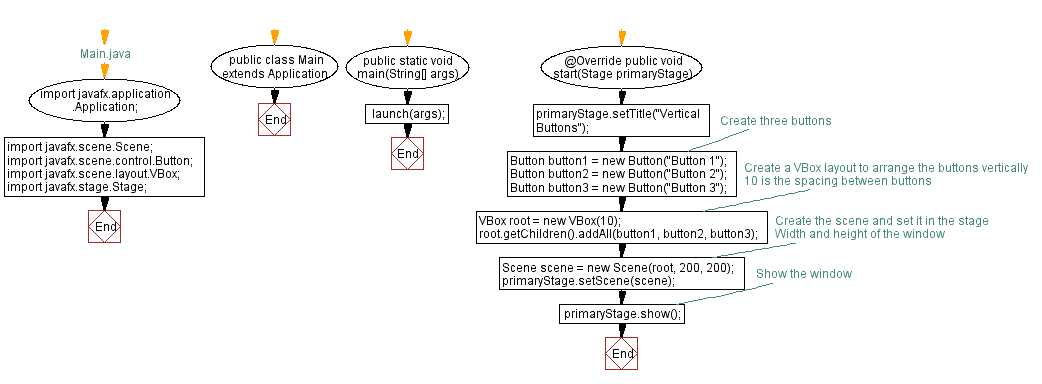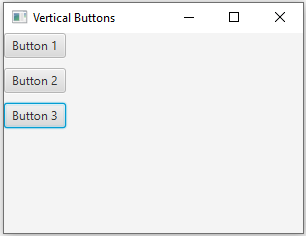Vertical Buttons: JavaFX application example
1. VBox with Three Vertical Buttons
Write a JavaFX application that uses a VBox to arrange three buttons vertically.
Sample Solution:
JavaFx Code:
//Main.java
import javafx.application.Application;
import javafx.scene.Scene;
import javafx.scene.control.Button;
import javafx.scene.layout.VBox;
import javafx.stage.Stage;
public class Main extends Application {
public static void main(String[] args) {
launch(args);
}
@Override
public void start(Stage primaryStage) {
primaryStage.setTitle("Vertical Buttons");
// Create three buttons
Button button1 = new Button("Button 1");
Button button2 = new Button("Button 2");
Button button3 = new Button("Button 3");
// Create a VBox layout to arrange the buttons vertically
VBox root = new VBox(10); // 10 is the spacing between buttons
root.getChildren().addAll(button1, button2, button3);
// Create the scene and set it in the stage
Scene scene = new Scene(root, 200, 200); // Width and height of the window
primaryStage.setScene(scene);
// Show the window
primaryStage.show();
}
}
In the above code, a 'VBox' is used to arrange the three buttons ('button1', 'button2', and 'button3') vertically with spacing between them. You can run this application to see the vertical arrangement of the buttons in the window.
Sample Output:
Flowchart:

Go to:
PREV : JavaFx Layout Management Exercises Home.
NEXT : HBox with Horizontal Image Row.
Java Code Editor:
What is the difficulty level of this exercise?
Test your Programming skills with w3resource's quiz.

